A Groundbreaking Designer’s NC State Roots
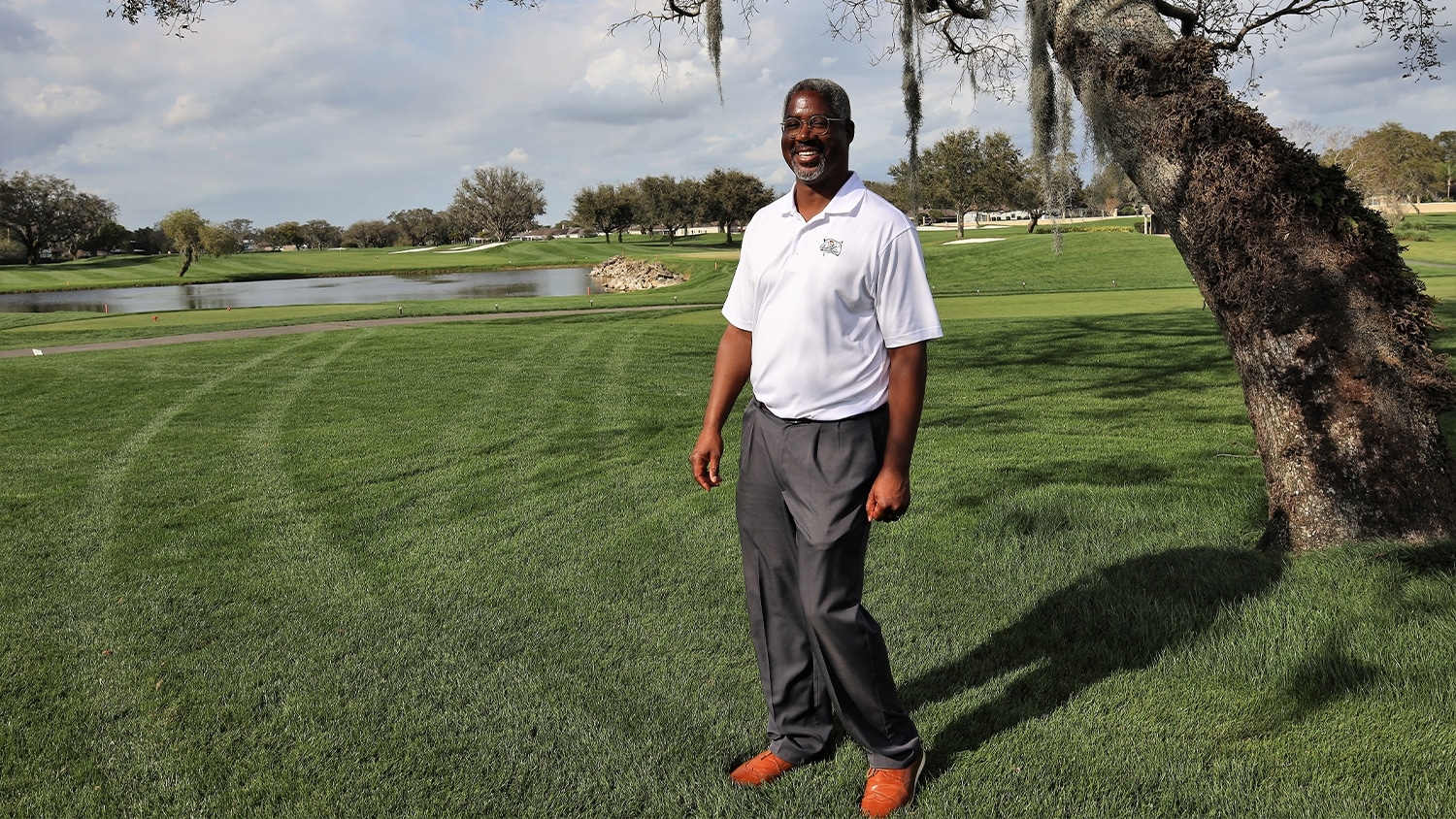
Brandon Johnson has known what he wanted to do for a career since he spent a good part of his seventh-grade English class doodling golf course designs on his blue-lined notebook paper.
When he came to NC State in the fall of 1992, he told advisor Art Rice his goal was to create golf courses, which is exactly what he did for his senior project before earning a bachelor’s degree in landscape architecture in 1997.
Ten years later, as part of Arnold Palmer Design Company, Johnson was one of two NC State-educated architects who designed and built the Lonnie Poole Golf Course on Centennial Campus for Palmer’s team — a dream come true for the Charlotte, North Carolina, native and for Iowa-born Erik Larsen ’78.
“To be honest, I blindly went into landscape architecture to design golf courses, not really knowing what all it entailed,” Johnson says. “I wanted to be a golf course architect. I loved golf, I loved art and I loved design. Landscape architecture allowed me to pull all those disciplines together.
“Architecture was too rigid for me. Engineering was a little too rigid for me. But landscape architecture gave me the chance to be outdoors, to understand the urban planning around golf course design, how to observe, how to be creative and how to think outside of the box.”
The tee box, that is.
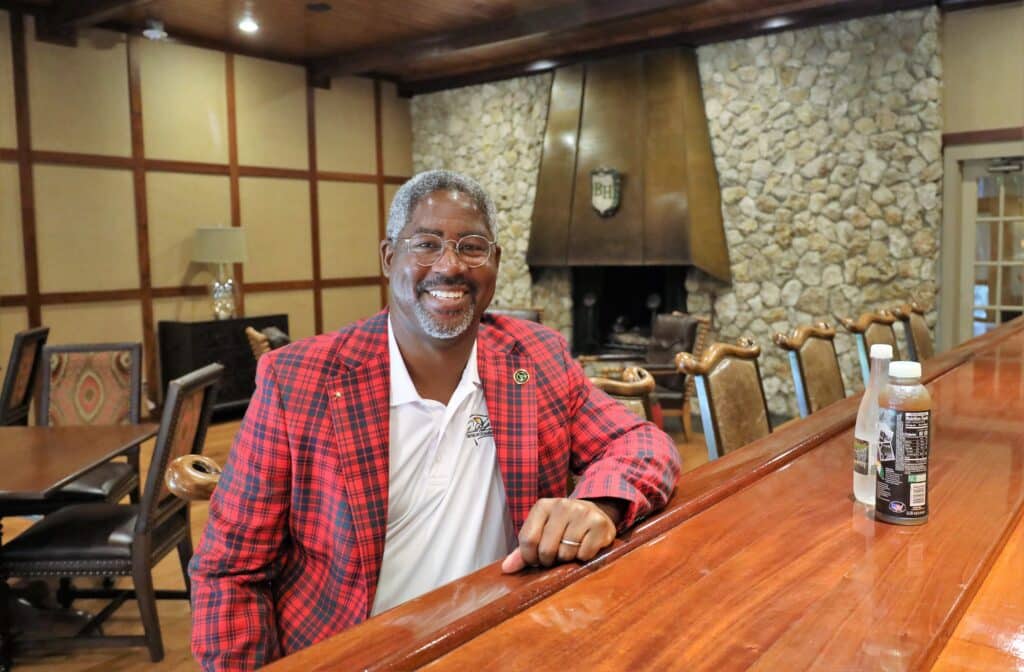
Johnson, who opened his own golf-course design company in February, furthered his education by getting a Master in Landscape Architecture at Harvard University, then taking his first job in the design office of First Tee, a youth development organization devoted to attracting young players with low accessibility to the game of golf.
He caught Palmer’s eye in August 2006 and spent more than 17 years working for the King of Golf from his base in Orlando, Florida. In 2021, The New York Times boldly declared that Johnson “is transforming the landscape of golf,” focusing on the fact that Johnson is the first and now one of two Black designers installed in the 171-member American Society of Golf Course Architects (ASGCA).
Johnson doesn’t particularly feel out of place among the red-and-black plaid jacketed membership: He’s been a bit of a unicorn his entire life.
Charlotte didn’t have many Black golfers when Johnson was a member of the South Mecklenburg High School golf team, back in golf’s BTW (Before Tiger Woods) days.
It certainly didn’t have a lot of Black cellists, an avocation Johnson began to keep up with his musically inclined parents Diane and Andrew Johnson and older sister Andrea.
(Truth be told, he wanted to play the sax, like his dad, but was told “there are too many saxophonists,” so he quit band and joined the school orchestra.)
After seven years of lessons, Johnson continued to train while at NC State under music professor Jonathan Kramer and by playing in the Raleigh Civic Symphony, a needed distraction from his hard studio work in the College of Design. When it came time to put his training to the test with a senior recital, Johnson was unable to perform after breaking a knuckle on his left hand playing pickup basketball at Carmichael Gymnasium.
I loved golf, I loved art and I loved design. Landscape architecture allowed me to pull all those disciplines together.
He still managed a nonperforming project to get his minor in music.
As a student at NC State, Johnson found his core of friends and supporters in the College of Design, even though there was a small population of other Black students enrolled. He continually caught the attention of faculty and classmates for his participation in community-based projects and devotion for pursuing his longtime goal to build golf courses.
“Brandon was always a brilliant student, someone who is probably among the top two or three students who ever studied here in my 20 years as the head of the Department of Landscape Architecture and my 30 years of being part of the faculty of the College of Design,” says Rice, now landscape architecture professor emeritus. “He always had a unique sense of purpose with a willingness to work hard for his goal.”
Golf’s Role in an Expanding North Carolina’s Economy
In many ways, the COVID-19 pandemic benefited North Carolina’s golf industry, as it was declared an essential outdoor activity during the state’s partial shutdowns in response to the virus.
At the height of the global pandemic, tee times were almost as hard to come by as medical-grade personal protective equipment.
For more than 550 golf courses in North Carolina, that essential activity exemption kept their doors open and their tee sheets full.
Now in full recovery, North Carolina’s golf industry is about to see a boost to its $4.2 billion impact on the state’s economy when the United States Golf Association hosts its U.S. Open Championship June 13-16 at Pinehurst No. 2 Golf Course. It’s the fourth time the event has been contested at the Sandhills resort, traditionally known as the Southern Home of Golf.
The USGA established a permanent site at the Pinehurst Resort that will open this spring, along with the return of the World Golf Hall of Fame, which was originally located in Pinehurst, moved to St. Augustine, Florida, and is now returning to its original home.
NC State’s influence on the national championship tournament remains strong since Associate Professor of Horticultural Science Danesha Seth-Carley has worked for more than a decade to return the course to its natural settings and alumni John Jeffreys and Kevin Robinson remain as the premier course’s top superintendents.
For Johnson and other designers, many of whom have NC State backgrounds, the international exposure of hosting one of professional golf’s four major championships keeps the game ever in the spotlight. Since the economic downturn in 2008, the industry has gone primarily from opening new courses to redesigning and refurbishing older courses to keep pace with advancements in equipment and proficiencies of modern golfers.
Many public and private clubs came out of the pandemic lockdowns flush with cash and ready to add new features.
“The pandemic is something that could have ruined the golf industry,” Johnson says. “Instead, it became an adrenaline shock. That’s a good thing. People were forced to stop and slow down.
“Golf became something you could do safely.”
One of Johnson’s first projects with his new company is redesigning some of the amenities at Lonnie Poole, NC State’s teaching and research golf course. He’s planned the next phases of the varsity golf teams’ practice facility between holes No. 2 and 3, including an expansive putting and chipping green and some practice bunkers. He’s also developed plans to redesign the original practice green and a new chipping area.
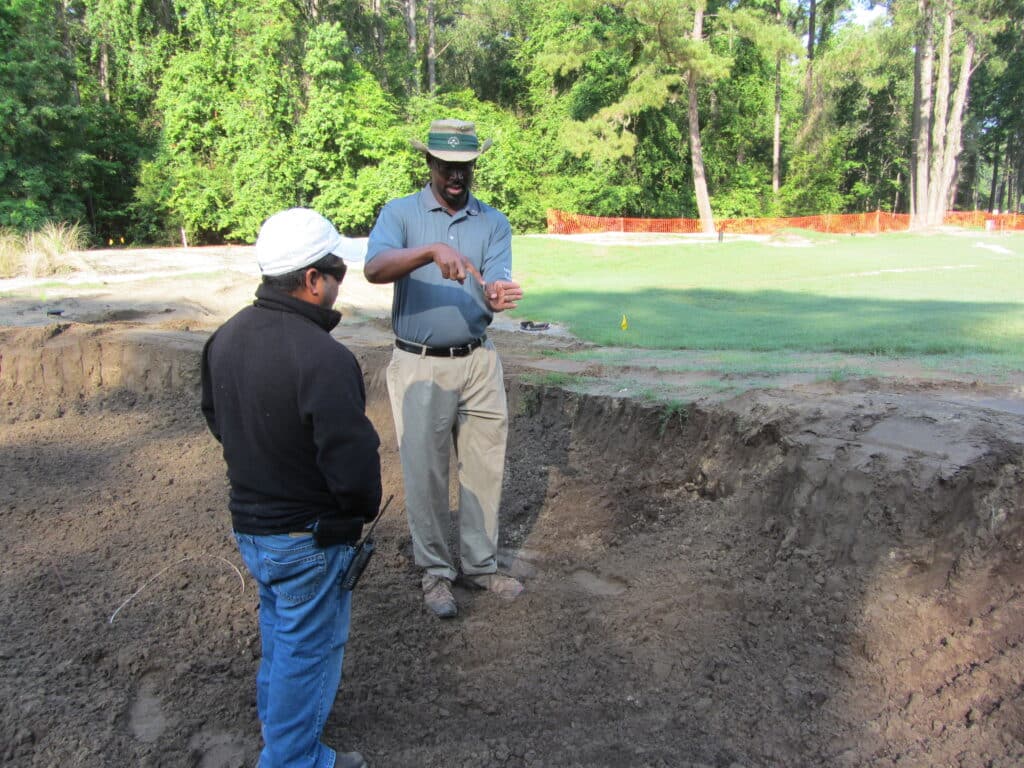
“I think we are in a moment of renewed interest in the game,” Johnson says. “Our biggest challenge now is fighting inflation. Because of demand, golf continues to be expensive.”
It’s an age-old problem for a sport that has had access issues for decades. Johnson hopes he can change that.
“As an architect, you want to create great, fantastic designs that are open to the public and are affordable to play,” says Johnson, who spent some of his free time on campus as a student hitting wedge shots at the practice green on the Miller intramural fields. “That’s one of the reasons I love the Lonnie Poole Golf Course, because it’s right there on campus, it’s affordable to students and for the community to play any time.
“In the moment that we’re in now, we’ve got to be careful with rising costs. We don’t want to price ourselves right out of this boom.”
Building His Own Brand
Johnson has studied the history of the few Black architects who have designed courses in the United States, including some who were barred from playing the courses they built.
That was a familiar refrain for Johnson’s extended family. When North Carolina Agricultural and Technical State University opened, his grandfather moved his family of three boys from the Richmond County town of Hamlet to Greensboro, with the hopes that one day they would receive a college education.
Two uncles and his father went to school there during the racially changing 1960s, and all earned college degrees. Johnson’s father became an engineer in Charlotte and raised an upper middle-class family that had opportunities older family members never dreamed of, such as the ability to play golf courses that were segregated even into the 1980s.
“What my uncles had to go through to play the same game I played was real difficulty, real segregation,” Johnson says. “They were told they didn’t belong. They helped break down some of those barriers.
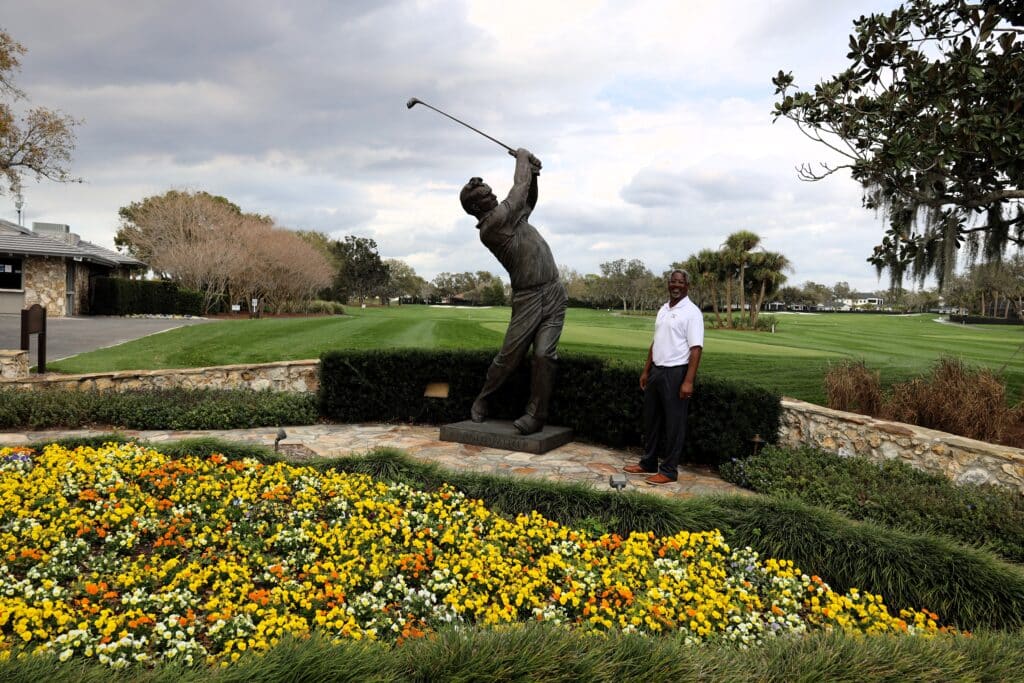
“So even if I had some struggles, they grew up in the Jim Crow South. My obstacles were not the same as theirs.”
Obstacles were still there, of course, and still noticeable—at least until he got to college.
“I do remember being the only African American golfer in most of my youth and high school matches in Charlotte,” Johnson says. “There was slightly more diversity in the orchestra, but I might have been the only Black male cellist.
“That’s why going to NC State was eye-opening for me. There were other Black students doing things that were different. We could ask questions and talk about what we were doing. ‘How’d you get into that?’”
The diversity of the College of Design helped, as well, since Johnson’s first professor was Fernado Magallanes, a Latin-American landscape architect pioneer. In the studio next door were students of design professor and professional artist Chandra Cox.
And not far down the hall was professor of art and design Charles Joyner, a nationally recognized designer and artist who brought his background from N.C. A&T and UNC Greensboro to NC State to broaden interests in public art.
It was a collaborative education with many influences at a school first founded with a gift of land from benefactor Richard Stanhope Pullen, one of North Carolina’s first dedicated landscape architects.
“It helps to see that kind of representation for having different views and different backgrounds,” Johnson says. “It helps in the ways you might approach your work.”
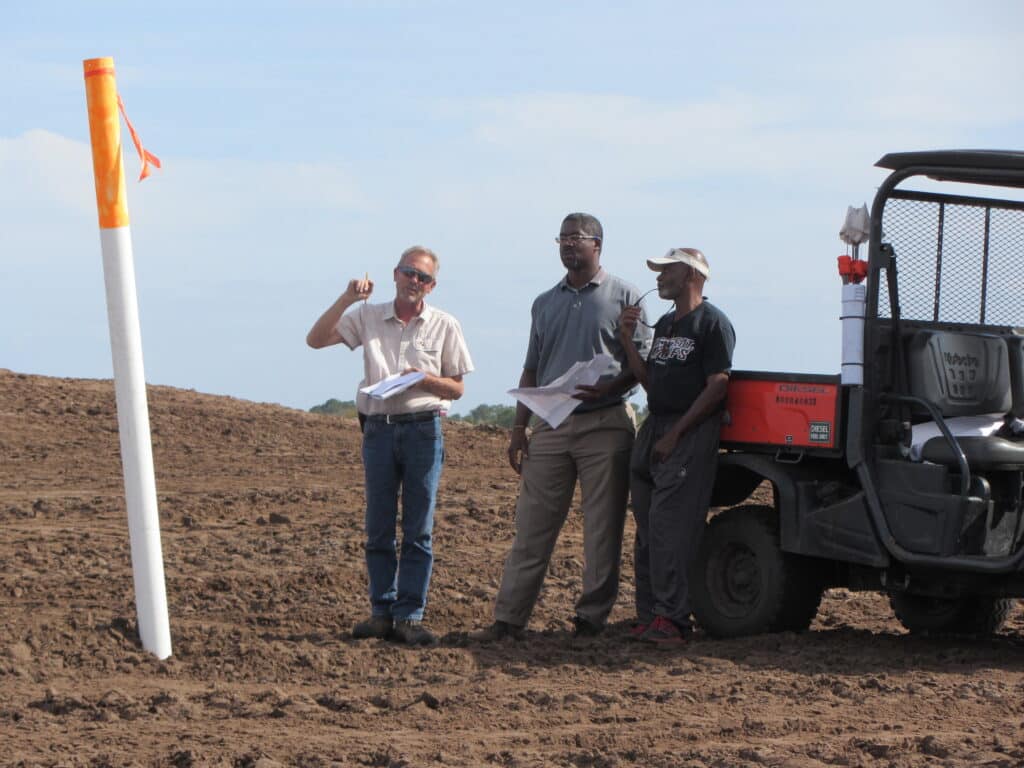
Sometimes, Johnson wishes his race was simply secondary to his abilities in his chosen profession, especially as he carries the torch with a new golf course design company.
“We’ve definitely come a long way since the days my dad and uncles were in school,” he says. “Do I sometimes get tired of being asked about being one of the few Black designers in the industry? Yes, I wish it wasn’t the case.
“Do I understand why it is important? Ever since the summer of 2020, it’s obvious that we are still not where we need to be if we want to be a whole community, a whole country. There is still a lot of work to do.”
For Johnson, making golf accessible to all is one way to advance golf’s reach and outreach.
“There should be no barriers,” he says. “This game has given me so many opportunities and experiences, which is why I love it so much. If I can be a source of inspiration and information for anyone else coming into an industry that has traditionally had some roadblocks, then that’s good.
“You just have to persevere. You have to stay focused on your dream and do everything in your power to realize it. There are people who will help, people of all backgrounds who are human and who want to see students succeed.”
This post was originally published in NC State News.


